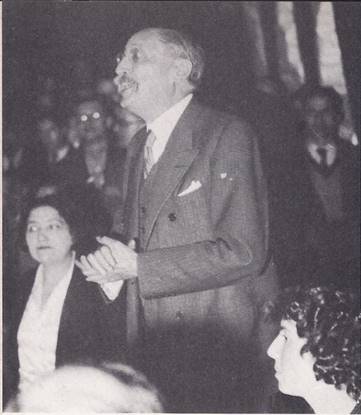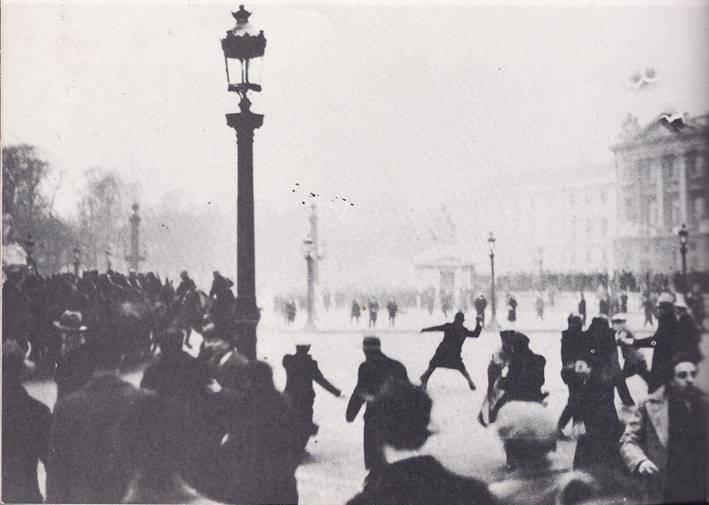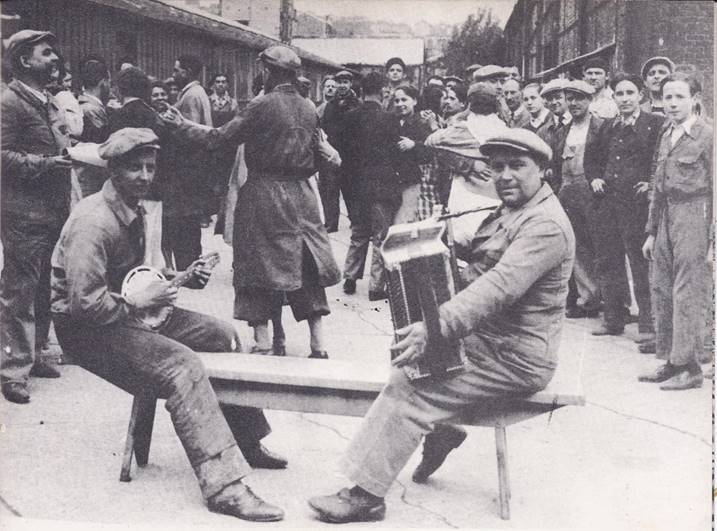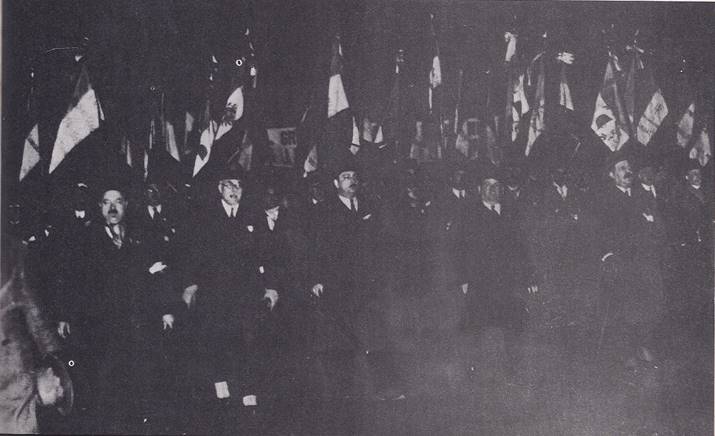UNLIKE Britain, France was not a highly industrialized country; its economy was fairly evenly divided between industry and farming. For this reason, the depression came to France later than it did to any of the democracies and its effect was less severe, but in no other democracy did communists and fascists play so large a part. For a time there was real danger that the French republic would be overthrown by the fascists and there were riots in the streets.
One reason the fascists were so dangerous was that the French people were sharply divided in their political opinions. There were many parties of many political shades. The largest and most important was the Radical Socialist party, which was neither radical nor socialist. The name was something that had been left over from the past. It was a middle-of-the-road party, supported by the middle class and the farmers.
To the left of the Radical Socialists were the Socialists, who had considerable strength and the Communists. On the extreme right were the anti-republic parties and the fascists. The most powerful of these was the Croix de Feu, the Cross of Fire. Made up mainly of war veterans, it was led by Colonel Francois de la Rocque and it won the support of a number of industrialists and financiers. Less strong, though still troublesome, were Action Francaise, Camelots du Roi, Solidarité Francaise‚ Jeunesse Patriote and the Cagoulards.
Because of the number of parties, it was almost impossible for any one party to win a majority and control the government. France was governed by coalitions, or combinations, of two or more parties, which supported the premier, the head of the government. But disagreements often arose, and the parties were quick to withdraw their support of the premier. Whenever that happened, a new coalition had to be formed — and it happened often. The result was that the government frequently changed hands and France had one premier after another. French politics resembled a merry-go-round, whirling at dizzying speed while the riders kept changing horses.

When World War I ended, much of northern France was in ruins. Factories, mines, railroads, houses and farms had been destroyed. In many places, the earth itself had been torn and churned up by artillery shells. Frenchmen felt that they had two main problems — to rebuild their country and to make Germany pay for the damage it had done. Furthermore, they still feared the might of the Germans and they wanted to prevent them from attacking again in the future.
In 1926, France had serious financial difficulties. T hen a so-called National Union government was formed, under Raymond Poincaré, who was known as the “strong man” of France. For several years there was prosperity, but in the 1930’s the depression reached France — and with the depression came trouble.
The trouble was set off by a financial and political scandal in 1934. A man named Alexander Stavisky had sold worthless bonds to a number of Frenchmen, cheating them of 200,000,000 francs. He lied to avoid arrest and then killed himself. A rumour spread that he had been killed by the police to keep him from revealing his connections with people in the government. Newspapers attacked the government and Camille Chautemps, the premier, was replaced by Edouard Daladier.

Fascist-minded men saw that this was a good chance to strike at the republic and they staged a huge demonstration against the government in the Place de la Concorde in Paris. Socialists and communists also turned out, to stop the fascists and Daladier called out a large number of armed soldiers and police. The demonstration took place at night, on February 6, 1954. Fighting had already started between the police and the crowds when, suddenly, the street lights went out. Confused in the darkness, the police and the soldiers fired their guns. Eighteen persons were killed and more than 2,000 were injured.
In the months that followed, one premier took office after another, there was rioting in the streets and the government ordered two of the fascist groups dissolved. France appeared to be on the verge of revolution and civil war. It seemed that half of the people feared an uprising by the fascists, while the other half feared an uprising by the communists, but, apparently, more people feared fascism. The Radical Socialists, the Socialists and the Communists decided to unite against the fascists and form the Popular Front. In the election held in the spring of 1936, the Popular Front won a clear-cut victory. For the first time in the nation’s history, the Socialists were the strongest party in the Chamber of Deputies, France’s most important legislative body. Léon Blum, a prominent Socialist, became premier. The Communists, who had also made gains in the election, refused to take part in the cabinet, but promised to support Blum.
As the Popular Front government took office, a wave of sit-down strikes was sweeping the nation. France’s workers were demanding higher pay, a forty-hour work week and collective bargaining. Blum succeeded in settling the dispute over wages and industrial firms agreed to give the workers higher pay. Laws were passed providing for collective bargaining, the forty-hour week and paid vacations. The government was also given the right to arbitrate disputes between employers and employees.
THE POPULAR FRONT
Blum made no secret of the fact that he was attempting to do in France what Roosevelt’s New Deal was doing in the United States. Reforms were made in the organization of the Bank of France and steps were taken to bring the armaments and aviation industries under government control. To aid farmers, the price of wheat was fixed. Armed fascist organizations were ordered to disband.

Seldom, if ever, had a French government done so much and so efficiently and in so short a time, but Blum was not only a Socialist, which conservatives resented; he was a Jew, which led to attacks by the French fascists, who said he was opening the way to a Bolshevik revolution. When Blum asked for emergency powers to deal with financial matters — the same powers which had been given Poincaré ten years before — the Chamber of Deputies agreed, but the Senate refused, and Blum was forced to resign one year after he had taken office.
By 1938, the Popular Front was all but dead. The Radical Socialists alone controlled the government and Edouard Daladier was again premier. In 1938, the French workers lost the forty-hour week. The government broke their general strike and took further steps against them.
France was still a democracy, but a democracy divided against itself. That division would cost the French dearly in the war that was soon to come.





